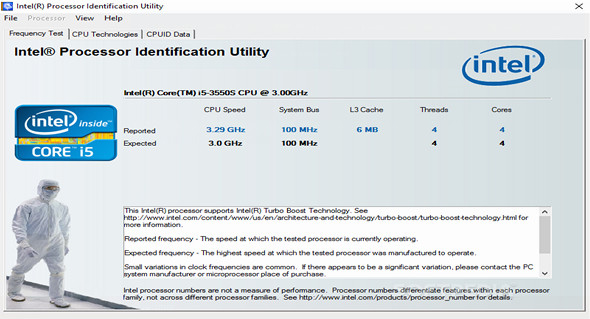


Multiple writes to the same log file (e.g., in a multiprocessor system) are appended to that log file. The utility asks for the filename and location to save the log file. The Save link generates a text log file containing all the Intel Processor Identification Utility information. The utility translates this instruction and uses it to display information about the processor. The CPUID Data section of the utility identifies Intel® processors by reading a precise instruction embedded in the processor. The CPU Technologies section of the utility reads the processor's internal registers to identify and display the Intel processor technologies that the processor supports. The utility then informs the user of the overall system status due to this comparison. The utility then examines internal data in the processor and compares it, and the operating frequency is measured. The Frequency Test section of the Intel® Processor Identification Utility runs a frequency determination algorithm (speed test) to determine at what internal speed the processor is running.

The Intel Processor Identification Utility allows you to identify the brand, features, package, intended & actual frequencies of your Intel microprocessor.


 0 kommentar(er)
0 kommentar(er)
